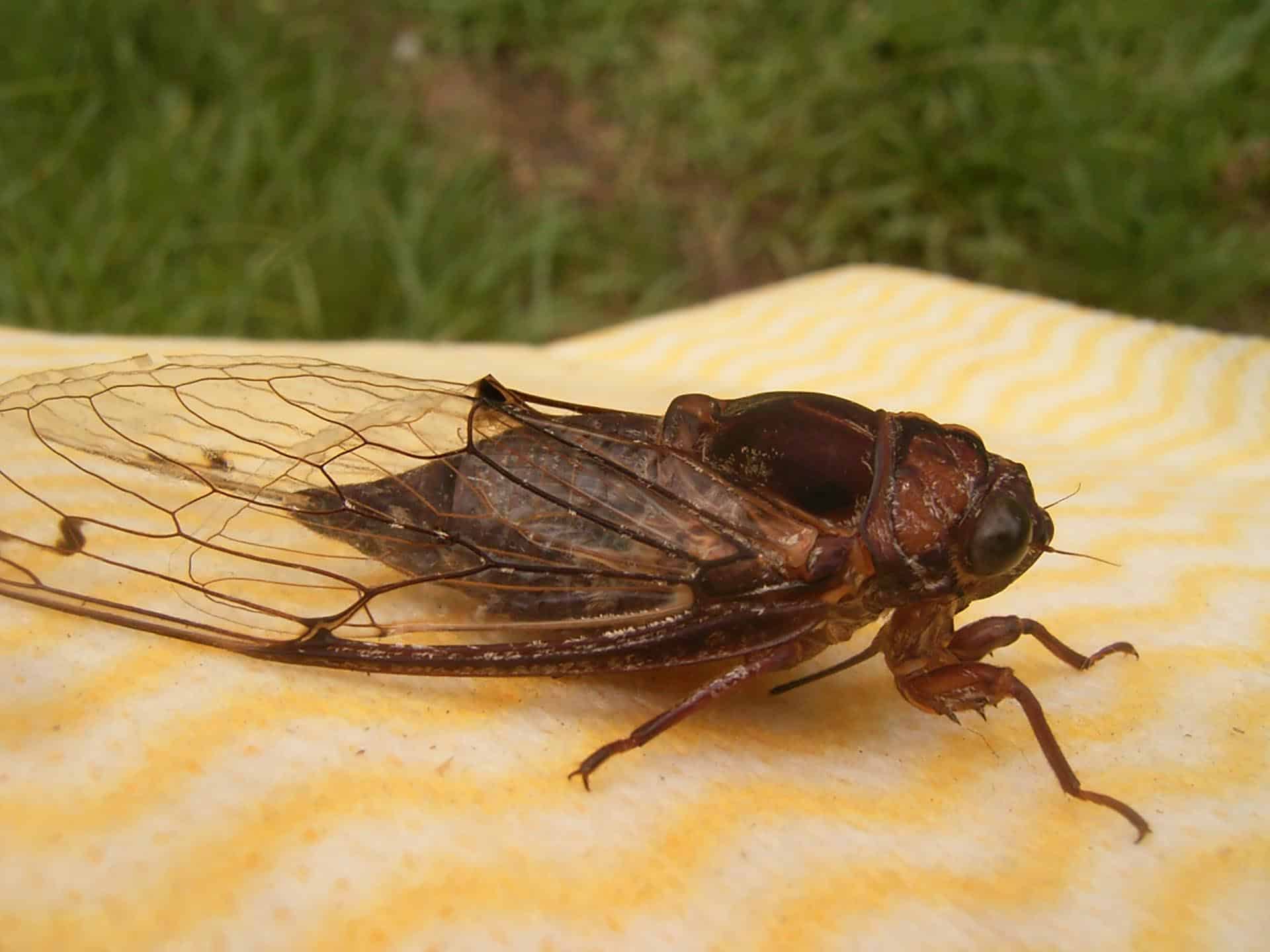Cicadas belong to the superfamily Cicadoidea. They are related to leafhoppers and froghoppers and have large, prominent, wide set eyes. Unlike the leafhoppers, though, they are not able to jump; nor do they walk or run very well. They take to flight if they have to move more than a few centimetres.
Their bodies are quite stout with their wings much longer than their bodies. Most are brown or black with some having green markings but there are some quite pretty species with colourful markings: even a blue species in Australia.
Adult cicadas live in trees.
Their most defining feature is their “singing”. They “sing” at night by vibrating tymbals, (membranes at the bottom of the abdomen) rapidly. Only the males make noises to attract a female with each species having its own song.
Adult size: 20mm-50mm (largest species is 70mm)

